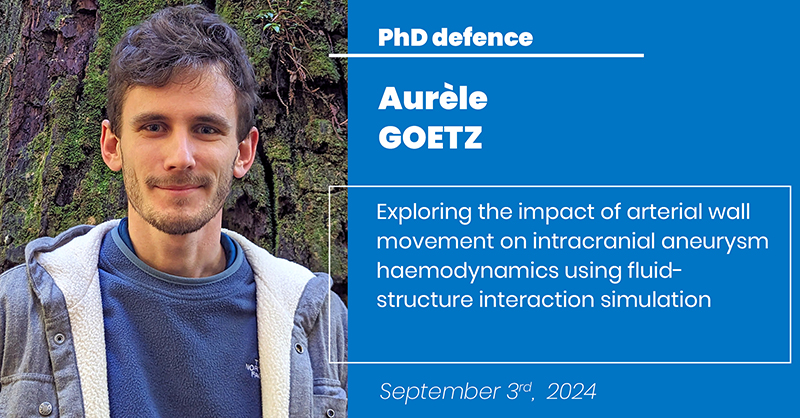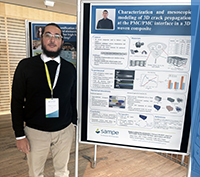PhD defence of Aurèle Goetz
Exploring the impact of arterial wall movement on intracranial aneurysm haemodynamics using fluid-structure interaction simulation

Aurèle Goetz conducted his PhD work in the CFL team under the supervision of Elie Hachem and Aurélien Larcher. He will defend his PhD in Computational Mathematics, High Performance Computing and Data, on September 3rd, 2024 in front of the following jury :
– M. Stéphane AVRIL Ecole nationale supérieure des Mines de Saint-Etienne
– Mme Irene VIGNON-CLEMENTEL Inria Saclay
– M. Elie HACHEM MINES Paris PSL, CEMEF
– M. Aurélien LARCHER MINES Paris PSL, CEMEF
– Mme Alison MARSDEN Stanford University
– M. Yves CHAU Centre Hospitalier Universitaire de Nice
Abstract:
Enhancing the fidelity of numerical simulations for intracranial aneurysms stands as a current research goal, as they have the potential to aid physicians in clinical decision-making. This work is dedicated to advancing our understanding of aneurysm hemodynamics with a particular focus on modelling the complex interplay between intra-saccular blood flow and surrounding vascular tissue. To achieve this goal, a finite-element-based fluid-structure interaction framework has been developed, coupling the resolution of the unsteady Navier-Stokes equations with a hyperelastic solid solver. Extensive testing on benchmarks has validated the proposed simulation framework, which has been subsequently applied to investigate in detail the coupled dynamics of an idealized intracranial aneurysm. Going a step further, a dataset of 101 idealized intracranial sidewall aneurysm geometries has been generated, with each case being examined to statistically highlight the relevance of considering deformable-wall simulations over classically employed rigid arterial wall models. Furthermore, to bridge theory with practical application, a patient case study illustrating the tangible impact of fluid-structure interaction in giant aneurysms is reported. Of particular interest is the coupled modelling of a flow-diverter stent along with deformable arterial walls, which goes beyond existing research and further emphasizes the relevance and potential of computational fluid dynamics in predicting treatment outcomes.
Volume rendering of the blood velocity in a pulsating giant brain aneurysm modeled using fluid-structure interaction
Keywords: intracranial aneurysm, haemodynamics, fluid-structure interaction, arterial tissue modelling, finite element method








